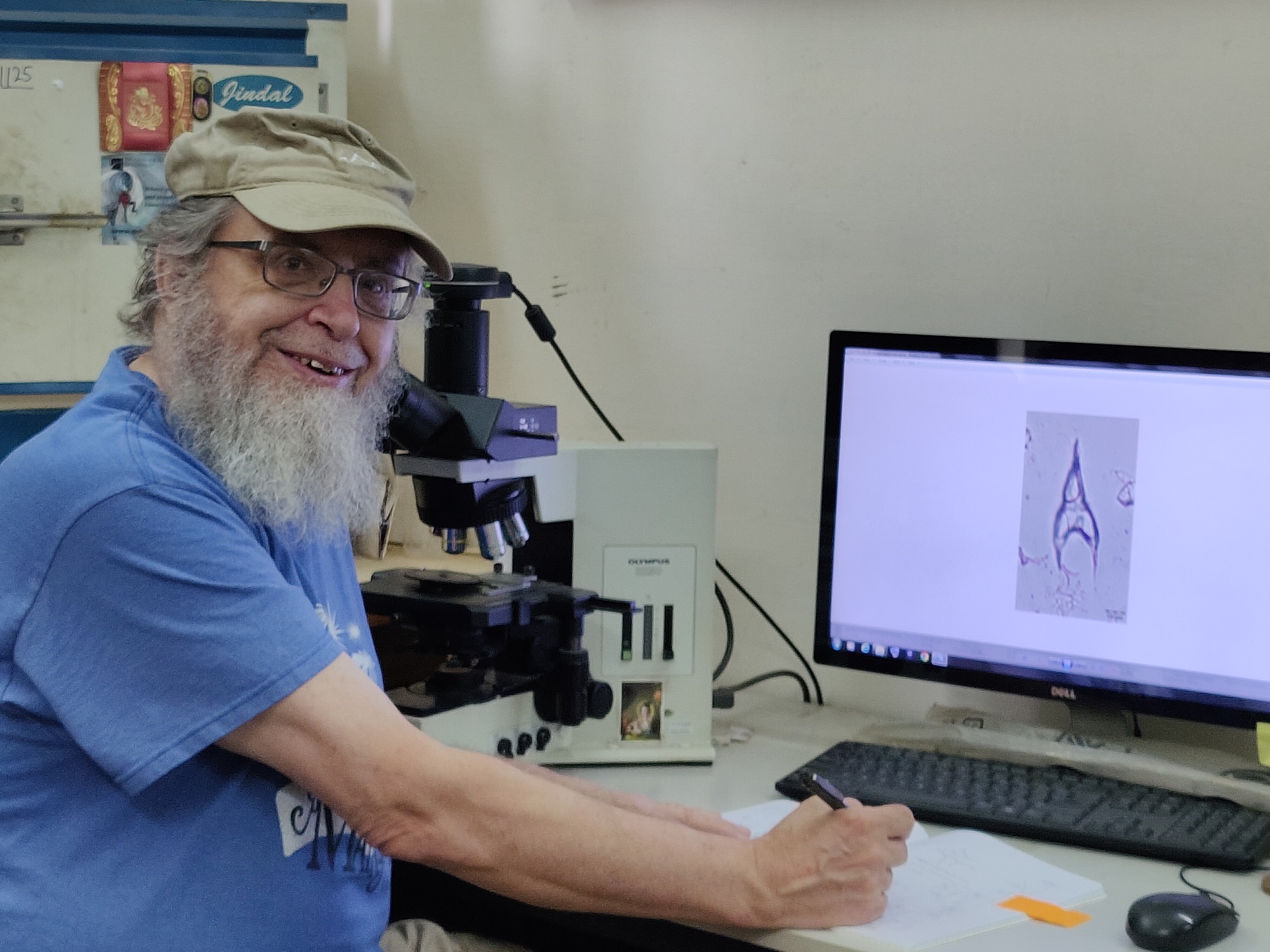
PRESQUE ISLE, Maine – University of Maine at Presque Isle Geology Professor Kevin McCartney has had a busy year, returning this summer from a nearly 4-month Fulbright Fellowship to the Birbal Sahni Institute of Palaeosciences in Lucknow, India, and publishing what he refers to as his “grand paper” in the science journal Marine Micropaleontology.
The main research project that McCartney worked on in India involved deep-sea sediments retrieved by drilling from a location in the southwest Pacific Ocean south of Australia. A paper that developed from this project has already been submitted. It describes a new species, named Corbisema tajmahalii after a general likeness to the Taj Mahal dome.
McCartney describes India as the most unusual place that he has ever visited: “Increases in motorized population have outstripped infrastructure improvements, the excess of horn-blowing traffic was the most difficult thing to get used to, and temperatures were very hot, sometimes circa 110 degrees, especially late in the visit,” he recalled.
During his stay, McCartney visited the Taj Mahal, which was about a five-hour train ride from Lucknow. A dedicated old iron enthusiast, he also recorded a video on the use of charcoal irons in India as part of his “Kevin Talks Irons” series on YouTube.
In April, while still in India, McCartney welcomed the publication of a major paper on silicoflagellate evolution during the last 65 million years, known as the Cenozoic Era. This project, which he has referred to as his “grand paper,” was developed over the course of four sabbaticals that took place over the span of five years. This paper includes examination of eight deep sea cores from around the world and the interpreted evolution of 10 genera. The silicoflagellates, a group of algae that have geometric skeletons of remarkable diversity, have not previously seen systematic study of the entire group over such a span of time.
While some significant unknowns of the group’s evolutionary history are perhaps solved in this work, new questions have sprung up. McCartney hopes that this paper provides a foundation that scientific newcomers to the field can build upon.
“As I like to tell my UMPI students, this is how science works: old questions get answers that are further improved by future study, while in the meantime there are many new questions that join the mix,” he said.
The “grand paper” was published in Marine Micropaleontology, generally considered the most significant journal in the field, and served as the cover story for the April issue. As occurs for many of his papers, there are many co-authors, including colleagues from three continents. This paper also includes the description of a new species.
Now back in Maine, McCartney’s research work continues. He has five papers in progress from his travels to Nebraska and India—some of which involve new species, including one that he reports to be “especially remarkable” – and he expects additional projects to develop with these colleagues over the next few years. He is also anticipating a new project with colleagues in Illinois that develops from recently recovered cores retrieved from the North Atlantic near Greenland. These sediments include excellent silicoflagellate preservation from early in the Cenozoic Era that might offer some resolution to questions presented in the recent paper.







